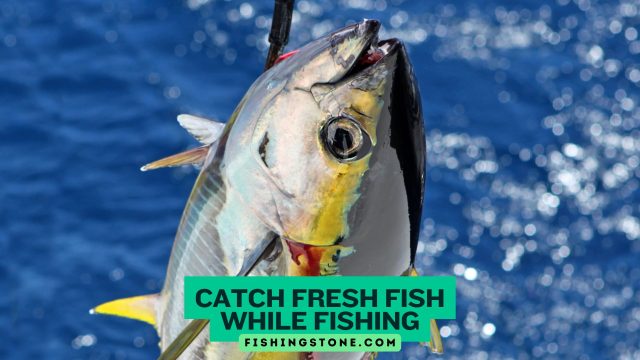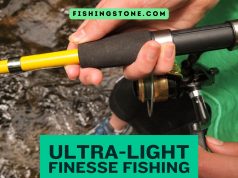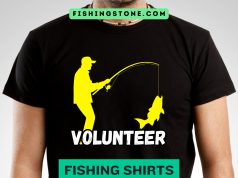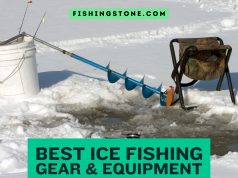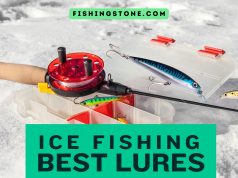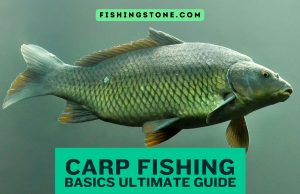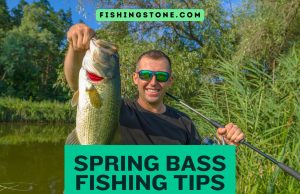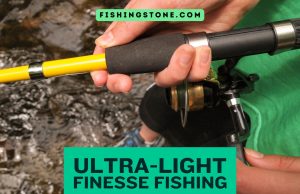Catch Fresh Fish While Fishing tips to catch more fresh fish every day. Follow our strategies and start reeling in your biggest catch today.
Catch Fresh Fish While Fishing: Proven Strategies to Reel in Your Catch
Fishing for fresh fish can bring a thrill like no other. Nothing beats the satisfaction of catching your own dinner. It’s a mix of patience, skill, and knowing where to look. Whether you’re a beginner or a seasoned angler, understanding key techniques makes all the difference. This guide dives into gear selection, best practices, environmental clues, and expert tips to boost your fishing success.
Note: Some Products links below will take you to Amazon!
Understanding Fish Behavior and Habitat
Fish behavior is driven by their surroundings. They stay near food sources, shelter, and safe spots. Their movements often follow daily patterns like feeding or resting. Different species prefer different habitats, from shallow streams to deep lakes. Water temperature, clarity, and currents shape where fish live. Some fish stay close to the bottom, while others swim near the surface. Knowing these habits helps to Catch Fresh Fish While Fishing. It’s important to observe how fish react to changes in their environment. By understanding where fish like to hide and feed, you can improve your chances of success.
- Fish Species and Their Habitats – Different fish love different homes. For example, bass hang out in shallow lakes and riverbanks, while trout prefer cold, clear streams. Snapper beat near coral reefs or rocky bottoms. When you know where each species lives, it’s easier to find them. Targeting fish that are in their favorite habitats increases your chances of a good catch.
- Seasonal and Daily Movement Patterns – Fish aren’t always in the same spot all year. In spring, salmon head upriver to spawn. During summer, fish often hide in deeper waters to escape the heat. At dawn and dusk, fish become more active. Planning your trips during these times can lead to more bites. Knowing seasonal migrations helps you pick the right times and places to fish.
- Environmental Factors Affecting Fish – Water conditions strongly impact fish behavior. Warm water holds less oxygen, making fish less active. Clear water shows fish your bait more easily, so sometimes they get spooked. Wind and rain can stir up the water, affecting visibility and fish movements. Watch for signs like jumping fish or surface ripples to find active spots.
Choosing the Right Fishing Equipment and Bait
Choosing the right fishing equipment starts with your target fish and where you’ll fish. Light gear works well for smaller fish, while bigger fish need heavy rods and reels. Match your line strength to the type of fish you want. For freshwater fishing, simple bait and basic setups work fine. Saltwater fishing needs tougher gear to handle stronger fish. Bait should be fresh and suited to the fish’s diet. Live bait, like worms or minnows, works great for many types. Artificial bait can also catch fish, but pick the right one for the species. Always consider the water conditions, like clarity and temperature, when selecting equipment and bait. The right setup makes your catch easier and fishing more fun.
- Essential Fishing Gear – Select gear suited for your target fish. Light rods and reels work well for panfish, while heavy-duty setups are best for big fish like catfish. Beginners should start simple — a good rod, fishing line, and reel are enough. Experienced anglers might customize their gear for specific situations.
- Selecting Effective Bait and Lures – Natural bait grabs attention easily. Worms, minnows, or cut bait work great for many species. Artificial fishing lures mimic real food and can be used repeatedly. Match your bait or lure to the fish you want. For example, use small minnows for bass or shiny spoons for trout. Discovering what works best in your spot takes some trial and error.
- Tackle and Accessories – Extra gear matters. Use sharp hooks and the right weights to keep bait at the right depth. A fish finder can help locate schools of fish faster. Keep your tackle organized in a tackle box to save time. Small adjustments in tackle can lead to more bites.
Techniques for Catching Fish Effectively
Catching fish effectively depends on understanding their habits and environment. Use the right bait that matches what fish eat in the area. Cast your line where fish are likely to be hiding, like near rocks or submerged items. Pay attention to water movement and avoid fishing during strong currents or when the water is too still. Change your fishing spot if you’re not getting bites, as fish can be shy. Keep your line steady and avoid sudden, quick movements that spook the fish. Matching the depth of your bait to where fish feed increases your chances. Use slow, consistent retrieves to attract more bites. Stay patient and watch the water closely for signs of fish activity. The key is fine-tuning your approach based on what’s working and staying flexible.
- Casting and Retrieval Methods – Good casting helps you reach fish hiding in tricky spots. Practice accuracy and distance to cover more water. Vary your retrieval speeds; sometimes a slow, steady pull works best, other times rapid movement triggers strikes. Pay attention to your line to avoid tangles and ensure good contact with your lure or bait.
- Using Flies and Live Bait – Fly fishing requires a bit of technique but can be very rewarding. Use lightweight flies that imitate insects or small fish. When fish are aggressive, live bait often does the trick. Place live worms or minnows just where fish are feeding to increase your catch rate. An expert tip: changing bait based on weather and fish mood works wonders.
- Patience and Observation – Sometimes, waiting quietly is the best move. Watch for fish jumping or ripples on the water surface. Look for feeding birds or floating vegetation — clues that fish are nearby. Adjust your tactics if you don’t get bites. Being observant helps you understand water signs and fish behavior, boosting your success.
If you need a reason to go fishing today read our post!
Best Locations and Timing for Fresh Fish
Fresh fish is best when caught early in the day, usually in the morning. Fish are more lively and fresh after cooler night temperatures. Coastal areas near ports or fish markets often have the freshest catch. The best seasons are spring and early summer when fish are most active. Offshore fishing trips tend to bring in the freshest fish because they’re caught directly from the sea. Avoid fishing late in the season when fish tend to move or go away. The right location varies with the type of fish. For example, salmon are best caught near rivers in spring, while tuna are plentiful offshore in summer. Being near the source of capture guarantees fresher fish. Timing your catch during peak feeding times, often dawn or dusk, increases your chances of getting fresh fish.
- Prime Fishing Spots – Look for well-known lakes, rivers, or coastal areas to increase your odds. Local fishing reports and maps can point you to hotspots. If unsure, guided tours or local experts can give you insider tips. These spots often have more fish or easier access.
- Optimal Times to Fish – Early mornings and evenings are prime time. Fish tend to feed when it’s cooler and less windy. Seasonal peaks vary by species. For example, spring is great for trout runs, while fall is good for bass. Weather patterns and moon phases also influence fish activity, making smarter timing a winning move.
- Navigating Regulations and Conservation – Always follow local fishing laws. Get your license and respect size or bag limits. Practice catch and release when possible. Sustainable fishing keeps fish populations healthy and waters vibrant for everyone. Expert authorities emphasize the importance of protecting the environment while enjoying your hobby.
Post-Catch Fish Handling and Tips
After catching fish, handle it quickly to keep it fresh. Keep the fish on ice or in cold water if possible. Avoid leaving fish in the sun or in warm places. Clean the fish properly by rinsing it with clean water. Remove guts and blood to stop spoilage. Always wash your hands before and after handling fish. Use clean tools and containers to prevent bacteria. If you’re not cooking the fish right away, store it in the coldest part of the refrigerator. Do not leave fish out for too long; a couple of hours is the max. When cleaning or filleting, make sure knives are sharp to reduce damage. Keep fish covered to prevent contamination. Proper handling preserves flavor and texture, ensuring safer eating.
- You Could Catch and Release the Fish – Catch and release is fine, but don’t forget to send us a picture first. We want to see what you caught. Share that photo on our Facebook page so everyone can check out your catch. It takes just a second and means a lot to us. Plus, it’s fun to show off your catch to others. So snap a quick pic before letting that fish go. We love sharing the big ones and the small ones. Don’t keep us waiting—send the photo before you release the fish.
- Proper Handling for Freshness – Use a cooler with ice or a fish bag to keep your catch fresh. Minimize time out of water and handle fish carefully to avoid damage. Clean and gut the fish soon after catching to maintain quality.
- Cooking and Enjoying Your Catch – Simple recipes work best. Grilled, baked, or fried fish make tasty meals. Add lemon, herbs, or garlic for flavor. Eating responsibly helps promote sustainable fishing and preserves fish populations. Enjoy every bite knowing you caught it yourself.
Thank you for Reading Our Catch Fresh Fish While Fishing Post
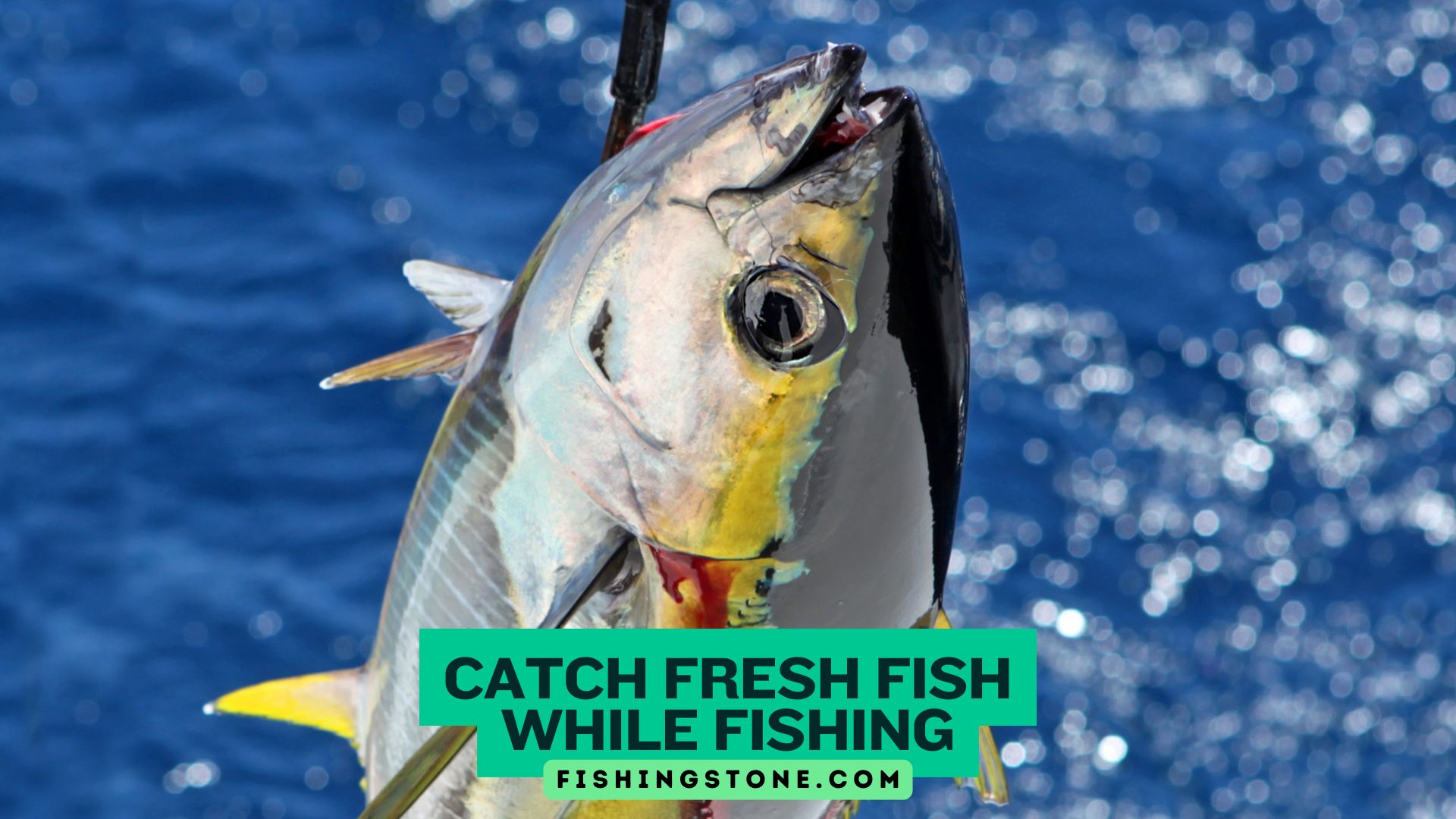
Catching fresh fish isn’t just luck; it’s about understanding fish, choosing the right gear, and knowing when and where to fish. With patience and practice, you’ll start seeing more bites and bringing home quality catches. Respect local rules and practice conservation to keep fishing fun for everyone. Use these strategies to sharpen your skills and enjoy the satisfaction of landing that perfect fresh fish every time.
Happy fishing!
We post on several sites on Socia Media. By joining us on your favorite ones you can get updates on our latest Fishing Posts.
Find us on Facebook – Twitter – Pinterest – YouTube
Check out our post on some cool fishing gadgets that any fisherman would enjoy! Do not forget any of these things that could ruin your next fishing trip here.
Hope you have fun Fishing every day. Fish On!


